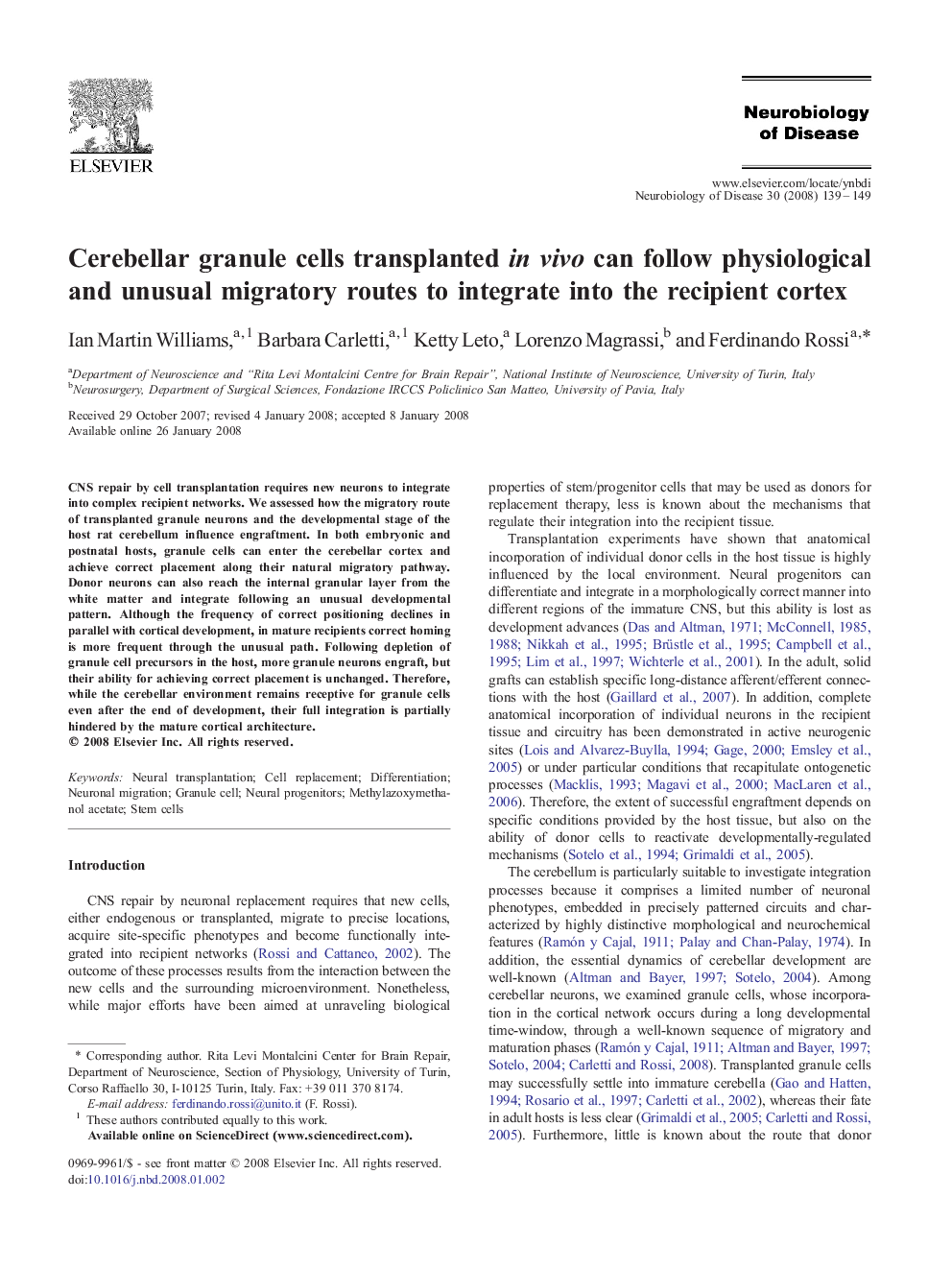| Article ID | Journal | Published Year | Pages | File Type |
|---|---|---|---|---|
| 3070458 | Neurobiology of Disease | 2008 | 11 Pages |
CNS repair by cell transplantation requires new neurons to integrate into complex recipient networks. We assessed how the migratory route of transplanted granule neurons and the developmental stage of the host rat cerebellum influence engraftment. In both embryonic and postnatal hosts, granule cells can enter the cerebellar cortex and achieve correct placement along their natural migratory pathway. Donor neurons can also reach the internal granular layer from the white matter and integrate following an unusual developmental pattern. Although the frequency of correct positioning declines in parallel with cortical development, in mature recipients correct homing is more frequent through the unusual path. Following depletion of granule cell precursors in the host, more granule neurons engraft, but their ability for achieving correct placement is unchanged. Therefore, while the cerebellar environment remains receptive for granule cells even after the end of development, their full integration is partially hindered by the mature cortical architecture.
